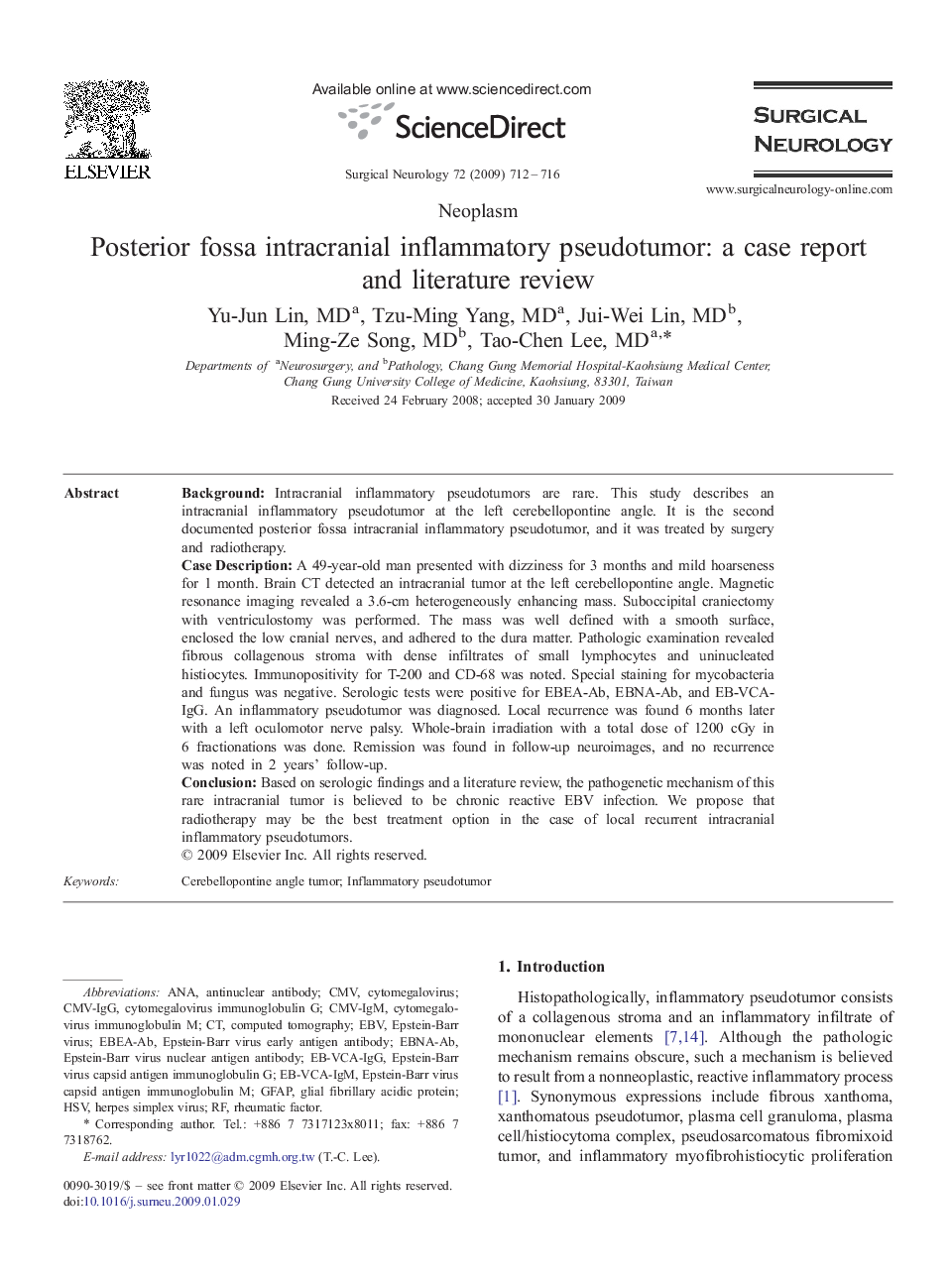| Article ID | Journal | Published Year | Pages | File Type |
|---|---|---|---|---|
| 3092050 | Surgical Neurology | 2009 | 5 Pages |
BackgroundIntracranial inflammatory pseudotumors are rare. This study describes an intracranial inflammatory pseudotumor at the left cerebellopontine angle. It is the second documented posterior fossa intracranial inflammatory pseudotumor, and it was treated by surgery and radiotherapy.Case DescriptionA 49-year-old man presented with dizziness for 3 months and mild hoarseness for 1 month. Brain CT detected an intracranial tumor at the left cerebellopontine angle. Magnetic resonance imaging revealed a 3.6-cm heterogeneously enhancing mass. Suboccipital craniectomy with ventriculostomy was performed. The mass was well defined with a smooth surface, enclosed the low cranial nerves, and adhered to the dura matter. Pathologic examination revealed fibrous collagenous stroma with dense infiltrates of small lymphocytes and uninucleated histiocytes. Immunopositivity for T-200 and CD-68 was noted. Special staining for mycobacteria and fungus was negative. Serologic tests were positive for EBEA-Ab, EBNA-Ab, and EB-VCA-IgG. An inflammatory pseudotumor was diagnosed. Local recurrence was found 6 months later with a left oculomotor nerve palsy. Whole-brain irradiation with a total dose of 1200 cGy in 6 fractionations was done. Remission was found in follow-up neuroimages, and no recurrence was noted in 2 years' follow-up.ConclusionBased on serologic findings and a literature review, the pathogenetic mechanism of this rare intracranial tumor is believed to be chronic reactive EBV infection. We propose that radiotherapy may be the best treatment option in the case of local recurrent intracranial inflammatory pseudotumors.
